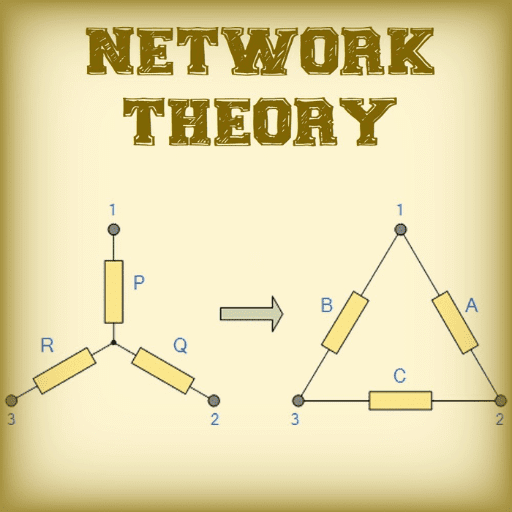Best Study Material for Year 11 Exam
Year 11 Exam > Year 11 Notes > History for GCSE/IGCSE > How was Germany unified?
How was Germany unified? | History for GCSE/IGCSE - Year 11 PDF Download
| Table of contents |

|
| Introduction |

|
| Background |

|
| The Process of Unification |

|
| Other Influential Aspects Contributing to Unification |

|
Introduction
- During the 19th century, Germany underwent unification, transforming numerous independent states in Central Europe into a cohesive and powerful entity known as the German Empire. Otto von Bismarck, serving as Prussia's Prime Minister, assumed the role of the inaugural Chancellor of the Empire.
- The official unification occurred on January 18, 1871, shortly following the conclusion of the Franco-Russian War. Wilhelm I was proclaimed Emperor of the German nation within the Hall of Mirrors at the Palace of Versailles, an act perceived as a significant affront to the French.
Background
- The origins of German unification can be traced back to Napoleon Bonaparte's military campaigns. During this era, Germany comprised numerous independent and small states with limited national identity.
- In the tumultuous Napoleonic Wars of the late 18th century, the French Empire emerged victorious, subduing most European powers, including many of the autonomous German states.
- Napoleon's reorganization of Germany reduced the original 300 states under the Holy Roman Empire to 39 larger states.
- Between 1806 and 1815, Napoleon established the Confederation of the Rhine, a coalition of German states allied with the French Empire against eastern adversaries like Austria, Prussia, and Russia.
- The pivotal Battle of Leipzig in October 1813 dealt a severe blow to Napoleon's forces, diminishing French influence in Germany and Poland.
- The final defeat of Napoleon at the Battle of Waterloo on June 18, 1815, signified the downfall of the French Empire, culminating its prolonged conflicts with European powers over 23 years.
- Following the conclusion of the Napoleonic Wars, the Allied forces disbanded the Confederation of the Rhine during the Congress of Vienna in 1815, thereby ending French control.
- Subsequently, they formed the Bund, also recognized as the German Confederation, designed to safeguard its member states and encourage collaboration among the dominant authorities in Central Europe.
- However, the Confederation encountered divisions due to the rivalry between its key member states, Austria and Prussia. Additionally, it was debilitated by the Revolutions of 1848, instigated by liberals and nationalists.
- Despite being reinstated in 1850, the Confederation eventually collapsed following Prussia's triumph in the 1866 Seven Weeks’ War. It was then succeeded by the North German Confederation under Prussian leadership a year later. The German states located south of this area also joined the new confederation, later named the German Empire.
Question for How was Germany unified?
Try yourself:
What event marked the official unification of Germany?View Solution
The Process of Unification
- Formation of the German Confederation: After the Napoleonic Wars, the Allied forces dissolved the Confederation of the Rhine and established the German Confederation to ensure mutual protection and cooperation among Central European states.

- Internal Division: The Confederation faced internal strife primarily due to the rivalry between Austria and Prussia, leading to its weakening. The Revolutions of 1848, driven by liberal and nationalist sentiments, further destabilized the Confederation.
- Collapse and Replacement: Despite a brief reinstatement in 1850, the Confederation eventually crumbled following Prussia's victory in the 1866 Seven Weeks’ War. This led to the emergence of the North German Confederation under Prussian dominance, encompassing southern German states and evolving into the German Empire.
- The process of consolidating Germany into a single nation-state commenced on 18 January 1871, marked by Wilhelm I's proclamation as the German Emperor at the Palace of Versailles. This pivotal event followed Prussia's victory over France in the Franco-Prussian War, leading to the annexation of Alsace and Lorraine.
- The German Empire comprised 26 distinct territories, encompassing an imperial land, four kingdoms, six grand duchies, five duchies, seven principalities, and three free Hanseatic cities. These regions were predominantly governed by royal families.
- Otto von Bismarck, a prominent figure in Prussia, assumed the role of the inaugural Chancellor of the German Empire, playing a crucial role in bolstering Germany's authority and sway throughout Europe until 1890.
- Fearing reprisals from France post their defeat in the Franco-Prussian War of 1871, Bismarck fostered alliances with various European powers, notably Russia and Austria-Hungary, to secure Germany's position.
- In 1872, a significant development occurred as the dominant powers in Europe formalized the League of Three Emperors, reinforcing their ties and coordinating foreign policies.
- Concurrently, Germany emerged as a leading industrial force globally during this era.
- Bismarck initiated a groundbreaking campaign known as revolutionary conservatism to instill loyalty among the German populace towards the empire. This initiative entailed granting social rights and cultivating robust relations with the working class to counteract the influences of liberalism and socialism.
- In the 1880s, Bismarck introduced the pioneering concept of a modern welfare state within Europe. This encompassed the establishment of national healthcare in 1883, accident insurance in 1884, and old-age pensions in 1889. Moreover, universal male suffrage was implemented in 1871.
- Furthermore, Bismarck instigated the Kulturkampf, a cultural campaign against Catholics during that period. This endeavor involved the expulsion of Jesuits and the imposition of state oversight on parochial institutions.
- Bismarck's tenure concluded on 18 March 1890 following his resignation as chancellor due to a disagreement with Wilhelm II, who ascended to the throne after Frederick III, Wilhelm I's son.
 |
Download the notes
How was Germany unified?
|
Download as PDF |
Download as PDF
Other Influential Aspects Contributing to Unification
- The industrialization of Germany during the early nineteenth century played a significant role in the eventual unification of its numerous independent states. The advent of the Industrial Revolution led to increased urbanization and population growth.
- However, despite these developments, trade barriers, disparities in laws, and differences in currencies continued to hinder the economic expansion of most German states. The majority of trade occurred within and between the 39 states, with tariff restrictions slowing down the process.
- Recognizing the potential benefits of unification, the German people believed that it would lead to the elimination of numerous taxes and tariffs and stimulate economic growth, particularly as production and transportation infrastructure improved.
- Prussia took the lead in advocating for economic change in 1818 by dismantling trade barriers within its own borders and reducing import rates. Other German states gradually joined this initiative, culminating in the formation of the customs union known as the Zollverein during the 1820s and early 1830s.
- By 1836, 25 of Germany's 39 states had become members of this economic alliance, indicating a growing recognition among them of the advantages of closer political unity.
- Similarly, the emergence of liberal and nationalist ideals in Europe, influenced by the French, played a crucial role in the eventual unification of Germany. As the power of Austria waned in favor of Prussia, liberalism and nationalism gained momentum.
- Klemens von Metternich, the Austrian state chancellor, viewed liberalism as a threat to the aristocracy. This perception led to increased political activism among the German people, especially the middle and working classes.
- During French colonial rule, Burschenschaften, a nationalist student society, emerged across the German states. They advocated for the overthrow of the old regime and promoted national unity.

- In response to the growing nationalist movement, the German Confederation convened at Carlsbad in 1819. It was there that Metternich proposed the Carlsbad Decrees, a series of reactionary measures aimed at suppressing nationalist sentiments. However, these decrees only fueled the German people's desire for nationalism and unification.
Question for How was Germany unified?
Try yourself:
What event marked the beginning of the process of consolidating Germany into a single nation-state?View Solution
The document How was Germany unified? | History for GCSE/IGCSE - Year 11 is a part of the Year 11 Course History for GCSE/IGCSE.
All you need of Year 11 at this link: Year 11
|
81 videos|86 docs|18 tests
|
FAQs on How was Germany unified? - History for GCSE/IGCSE - Year 11
| 1. How was Germany unified in the 19th century? |  |
| 2. What role did Otto von Bismarck play in the unification of Germany? |  |
Ans. Otto von Bismarck, the Prime Minister of Prussia, played a crucial role in the unification of Germany. He used a combination of military victories, diplomatic alliances, and strategic negotiations to achieve the goal of German unification under Prussian leadership.
| 3. How did the Franco-Prussian War contribute to the unification of Germany? |  |
Ans. The Franco-Prussian War of 1870-1871 was a key event that contributed to the unification of Germany. Prussia's victory over France not only weakened French influence in Europe but also garnered support for German unification among the various German states.
| 4. What were some of the influential aspects contributing to the unification of Germany? |  |
Ans. Apart from military victories and diplomatic maneuvers, other influential aspects contributing to the unification of Germany included the economic growth and industrialization of the German states, the rise of nationalism, and the support of the middle class for a unified German state.
| 5. How did the German Confederation pave the way for the unification of Germany? |  |
Ans. The German Confederation, established in 1815, laid the foundation for the eventual unification of Germany by bringing together various German states in a loose alliance. The Confederation provided a framework for cooperation and coordination among the German states, setting the stage for future unification efforts.
Related Searches

























